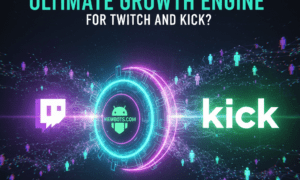Research reveals that 68% of online experiences start with a search engine. Many businesses still struggle to get meaningful results from their SEO efforts. Companies often need to work with an SEO agency once they realize search engine optimization goes way beyond simple keyword placement.
Some SEO techniques work better than others. Certain strategies can boost rankings within months. Others might take substantially longer to show any effect, or might not produce results at all. Success depends on finding and using proven methods that line up with current search engine algorithms and user behavior patterns.
This detailed guide gets into the most effective SEO techniques that consistently deliver measurable outcomes. Readers will find practical approaches to improve their search visibility through technical optimization, content strategy, and advanced link building tactics. These approaches can help accelerate business growth.
Understanding the SEO Landscape in 2025
The digital world of SEO keeps changing fast. The year 2025 has brought major changes that make companies rethink how they show up in search results. Businesses need to understand these changes to stay visible online as competition grows fiercer.
Key Algorithm Changes Affecting Rankings
Google’s March 2025 Core Update finished on March 27, 2025. It altered the map after two weeks of ranking changes. Local SEO Guide’s tracking data shows this update created the most unstable search results we’ve seen in a year.
This update changed how Google looks at forum content. Forum sites got more visible after Google’s mid-2023 “hidden gems” update. Now, many of them are losing their spots in search results. Reddit keeps growing its visibility, but other forum sites that once did well are now dropping in rankings.
The update has changed things for many types of sites:
- Forum Content Devaluation: Sites that only work as forums are losing their edge
- Programmatic Content Penalties: Websites that make lots of automated pages just for SEO, not users, are dropping fast
- Cross-Sector Impact: This core update has hit all kinds of sites – stores, government pages, forums, and content sites
Businesses working with an SEO agency need to learn about these algorithm changes. This helps them build effective SEO strategies that match what Google wants.
The Shift from Keywords to User Intent
The biggest change in 2025’s SEO world is how we’ve moved from focusing on keywords to understanding what users want. Google has made it clear – “satisfying Search Intent is their #1 goal”. Your page won’t show up in search results unless it gives users what they’re looking for.
Search intent (also known as user intent or keyword intent) means the reason behind someone’s search – what they want to achieve. Google now uses smart algorithms to understand complex searches and user context through semantic search. This makes it vital to understand and work with search intent for SEO optimization.
Experts say search intent usually fits into four groups:
- Informational: Users want to learn something
- Navigational: Users look for a specific page or website
- Commercial: Users research before buying
- Transactional: Users want to do something like make a purchase
Advanced SEO now means creating content that looks like top-ranking pages for your target searches. SEO isn’t about keywords anymore. It’s about making great content that gives users what they need.
The questions SEOs ask have changed. Instead of “What keywords should I target?”, they now ask “How can my brand help users who search on Google or LLMs?”
Mobile-First Indexing Importance
Google now ranks websites based on their mobile versions. Mobile optimization isn’t optional – it’s a must for search visibility. With mobile-first indexing, Google uses the smartphone agent to check your site.
Mobile matters more than ever – 59.45% of all web traffic comes from mobile devices. This shows businesses following SEO best practices why they need to put mobile experience first.
To do well with mobile-first indexing, these SEO techniques work best:
- Keep content, structured data, metadata, and key elements the same on mobile and desktop
- Fix common mobile indexing problems like missing data and blocked resources
- Make sites fast by loading primary content right away and having enough server power
Sites that aren’t mobile-friendly might not show up in search results as we go through 2025. This gives companies working with SaaS SEO marketing agencies like Nine Peaks Media a chance to fix their technical foundation.
These changes mean SEO content strategy must balance technical details with great user experience. Companies that follow these basics aren’t just ready for today’s algorithms – they’re building something that will last in our complex digital world.
Setting Up Measurable SEO Goals
SEO campaigns need clear measurement frameworks to confirm their effectiveness and prove their worth for continued investment. Companies must set concrete metrics to track progress, adjust strategies, and show the business value of their SEO work.
Defining KPIs Beyond Rankings
Keyword rankings alone don’t tell the whole story of SEO performance. Smart companies now track a wider set of key performance indicators that directly link to business results.
“The measurement plan features only rankings” remains a common limitation for many organizations. Companies should add these metrics to develop a more detailed view:
- Share of voice (SOV) – This metric shows your brand’s market share across search results compared to competitors. Enterprise businesses should make SOV a core part of their SEO reporting.
- Customer lifetime value (CLV) – Most companies track CLV for paid media, yet often skip it in SEO campaigns. Looking at the lifetime value of customers from organic search gives better insight into long-term ROI.
- Non-brand keyword traffic – Traffic from non-branded terms helps you measure growth beyond your existing brand audience.
- Email signups – Email signups create powerful advertising opportunities with organic search by building remarketing lists.
SEO goals should match broader business objectives. This connection ensures that SEO work moves toward company goals instead of existing alone. Plus, SEO goals must follow the SMART methodology—specific, measurable, achievable, relevant, and time-bound—to provide clear direction and accountability.
Creating Realistic Timelines for Results
Setting measurable SEO goals requires realistic timeframes. This helps manage expectations and prevents disappointment among stakeholders.
On average, SEO takes three to six months to show original results. Some businesses might wait up to a year before seeing substantial changes in rankings and traffic. Understanding this timeline proves essential for developing KPIs and reporting frameworks.
Google needs time—from hours to weeks—to crawl and index new content. Best practices must be implemented gradually across all pages because simultaneous changes might look suspicious to search engines.
Your industry’s competitive landscape affects these timelines. Businesses in highly competitive fields often need more than the typical 4-6 months to see meaningful organic traffic growth. The resources you put into SEO efforts substantially influence your results—larger budgets enable more detailed content creation and link-building campaigns.
Establishing ROI Measurement Frameworks
Organizations want to show financial returns on their SEO investment. A structured framework to calculate and track ROI helps justify SEO budgets and focus on effective tactics.
The simple formula for calculating SEO ROI reads: (SEO revenue – SEO costs) / SEO costs. You need to track two main components:
- Total SEO costs – These cover in-house resources for SEO, freelancer/agency fees, SEO tools, content creation expenses, and link building investments.
- Revenue from SEO – This includes the total value of conversions from organic search efforts, typically tracked through Google Analytics 4 or similar tools.
Measuring ROI becomes trickier for businesses without direct e-commerce transactions, since leads don’t have specific values. These companies should calculate each lead type’s average value based on past conversion rates.
Good ROI frameworks recognize long-term SEO benefits that are harder to calculate. SEO campaigns deliver value over time, with results that grow rather than fade. Your stakeholder communications should highlight both immediate metrics and the long-term advantages that build up over time.
Conclusion
SEO needs a balanced approach that combines technical excellence, strategic content creation, and evidence-based decision-making. Successful companies achieve meaningful SEO results by focusing on user intent satisfaction while building strong technical foundations through mobile optimization, site speed improvements, and Core Web Vitals adherence.
Companies must go beyond simple keyword targeting to create strategies that cover local presence, authoritative link building, and systematic performance measurement. Clear goals, relevant metric tracking, and tactics based on actual results should take priority over assumptions.
Algorithm updates and technical challenges create constant obstacles. However, systematic troubleshooting helps maintain search visibility. Companies that work with experienced SEO professionals handle these complexities better and achieve steady organic traffic growth through proven optimization techniques.
Smart companies see SEO as an ongoing investment instead of a one-time effort. Organizations that implement these strategies set themselves up for lasting success in an increasingly competitive digital world.



































